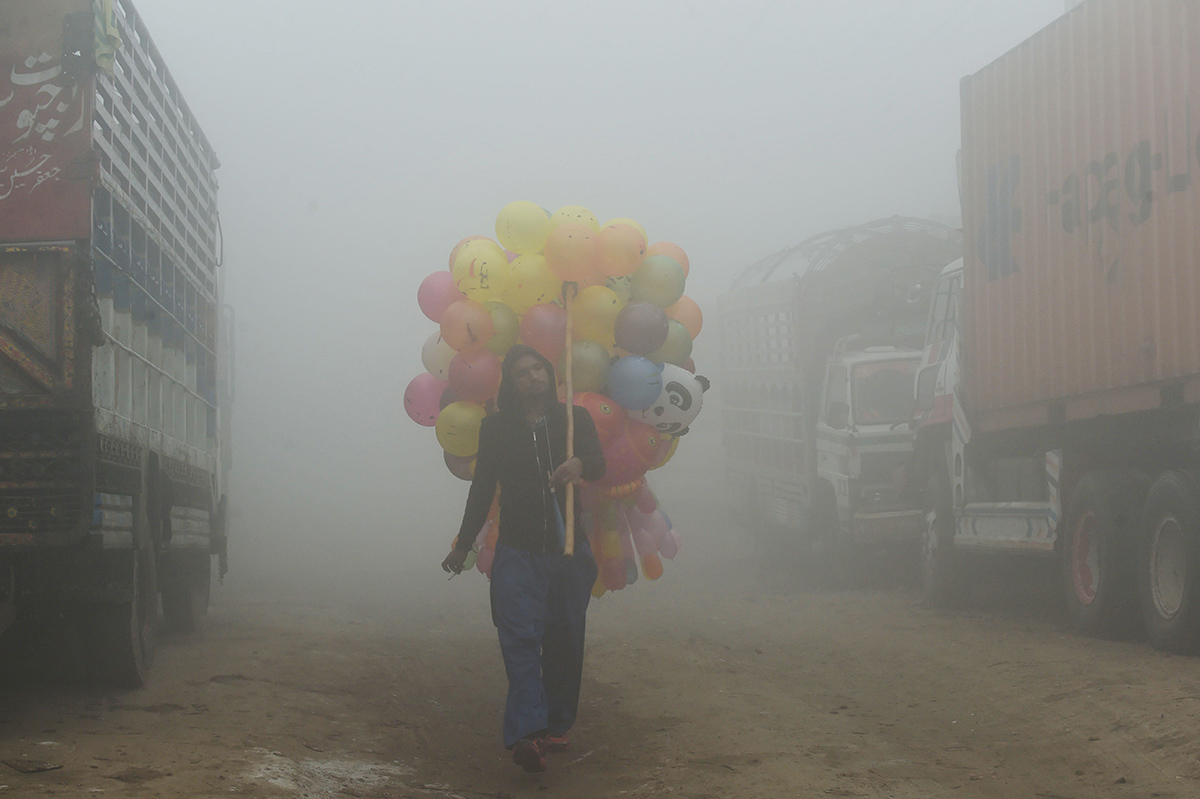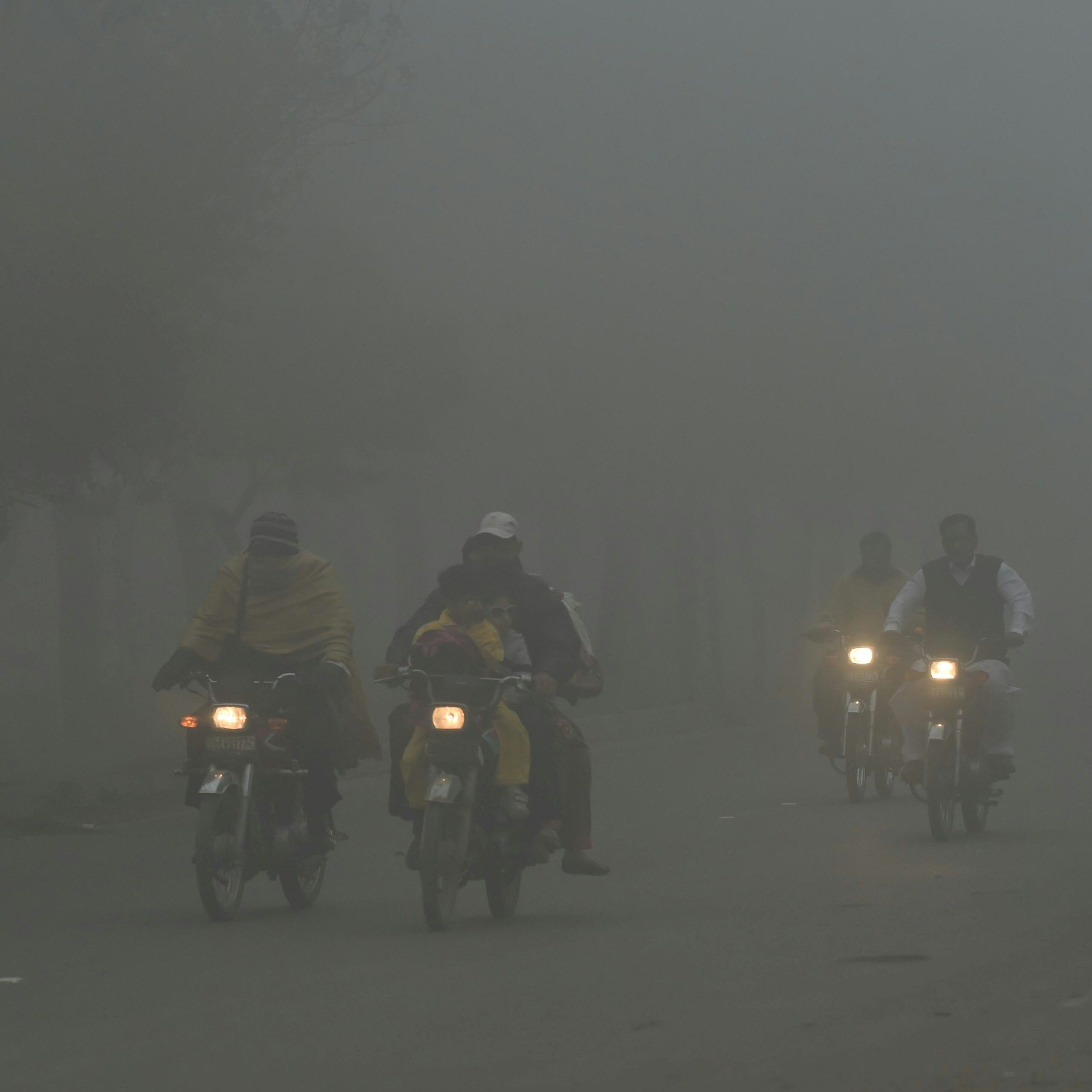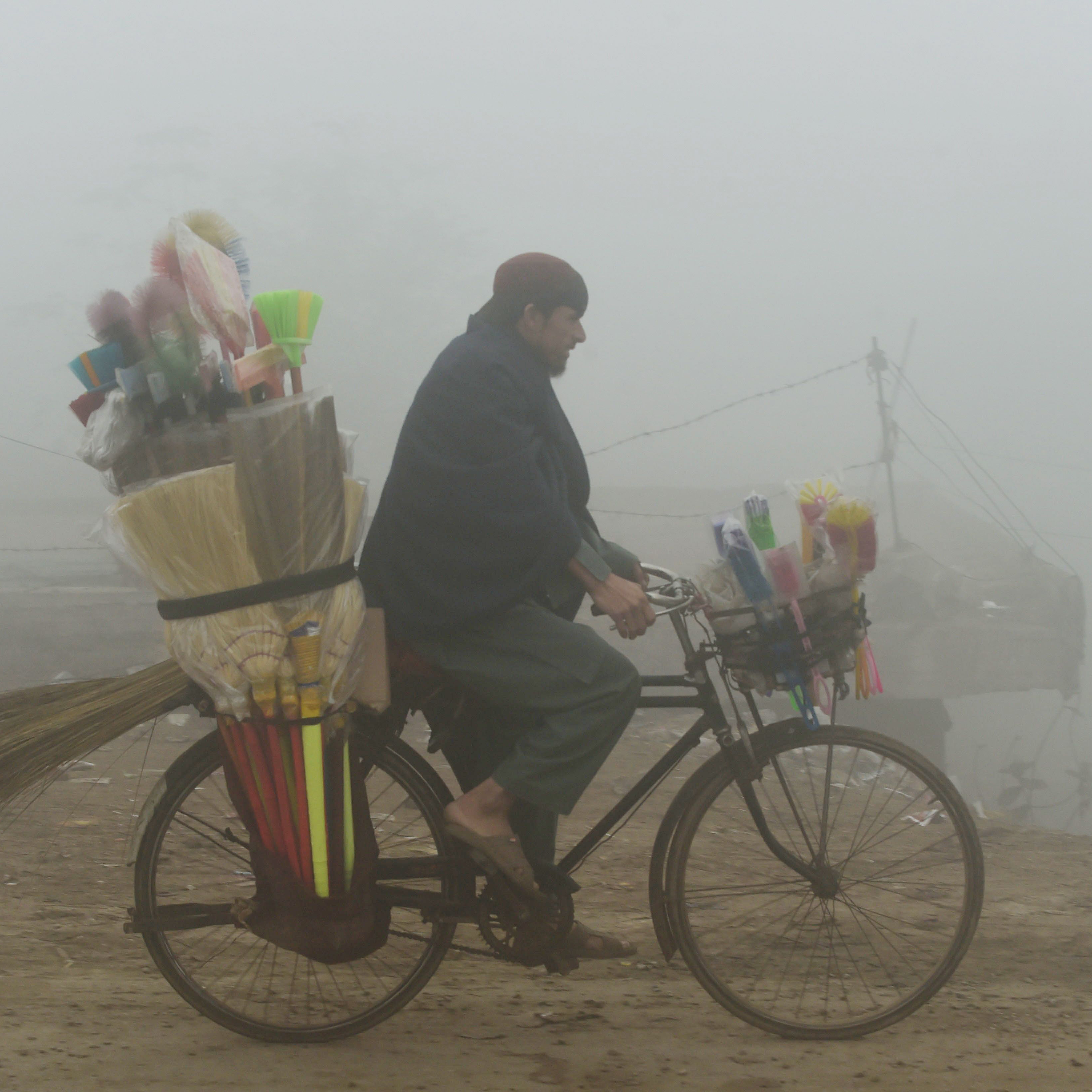It's been over a week since Lahore’s skyline has been shrouded in toxic smog, reducing visibility and prompting health concerns amongst the citizens.
The opaque haze first became most visible on October 30 in Pakistan’s second-largest city. On most days, readings of the PM 2.5 – tiny particles that can get lodged in the lungs – were off the charts, reaching as high up as 700 micrograms per cubic meter. While the World Health Organisation’s air quality guidelines stipulate a safety limit of 35 micrograms per cubic meter in 24 hours.
The low visibility has also resulted in accidents, killing one person, to date, and injuring several others.
Yet, the Punjab government has not declared a public health emergency. Even more troublingly, weather forecasts predict the dirty air to persist for a more few days. “There is chance of light rain by November 13 or 14, which would help dissipate the smog,” says Mohammad Riaz, the chief Meteorologist in Lahore, “The weather pattern is now changing. But this is just a possibility right now.”

Last year, the city-dwellers witnessed a similar spike in air pollutants and density of harmful particles. “The first three days of November are the most hazardous, in terms of complaints of respiratory problems and infections. This pattern is unlikely to change in the coming years,” adds Riaz.
According to Punjab’s Environment Protection Department, there are three causes of pollutants in Lahore and its adjoining areas. Majority of the smog-forming particles billow in from India, where authorities are trying to crack down on crop burnings and coal plant emissions. As for local contributors to the pollution stew, in the city of 11 million, there are 7 million registered motor vehicles, which have been dirtying the air all year round. Then, there is the industrial sector in urban areas. “Since last year, in northern Lahore, we have shut down over 200 units of steel factories,” Tauqeer Ahmad Qureshi, Director of the government-run Environment Protection Agency, tells Geo.tv, “They will have to prove that they have taken measures to be environment-friendly before they are allowed to open again.” On Tuesday, the government also pushed school timings in order to ensure children avoid travelling at early mornings, when the air is most dense.
On October 21, the Punjab government released its policy document on controlling smog in the city. The suggestions include controlling the burning of municipal waste, banning the burning of crop residue, better traffic management and launching a public awareness campaign. It is unclear if any of these rafts of measures have been implemented as yet.
Last November, at the time of onset, Lahore had only one air quality monitoring station. This time, the EPD transported five more from cities, including Faisalabad, Sahiwal, Chakwal. Data from the stations has not been released to the public.
With reporting by Benazir Shah
India and Pakistan need to talk about air pollution today
Smog is not a new problem. It has been recurring in India and Pakistan for the last at least three years now. Policymakers, in both countries, have a good idea about the root causes of the air pollution in their cities.
Now, the Indian side has taken some urgent initiatives to deal with this, such as banning firecrackers during Diwali celebrations and pushing smog-emitting vehicles off the roads and halting construction work. Also, burning crop stubble can lead to FIRs, fines and even jail time in India’s Punjab. Unfortunately, these measures have not been very effective, as is evident these days with the density of the smog.
Our side, on the other hand, has woken up to the crises too late, only acting when there was enough uproar.

The uptick in air pollution is a public health emergency and has been declared so in India. But, for India and Pakistan, it is also an opportunity to put their difference aside and sit together. Pollution knows no boundaries. People already are, and in the future, will be dying on both sides of the border. If we pool in our resources, compare statistics from the air quality monitors, and develop collaborative policy solutions that can be implemented in both Punjabs, we can hammer out a long-term solution to tackle air pollution.
In the long-run simply banning farmers from setting their crops ablaze won’t help. Other solutions should be explored; one could be to subside machines that farmers can use to clear their fields.
Right now, Pakistan is blaming the India side for polluting its air. Maybe when we sit together, face to face, we can be more realistic.
Hammad Naqi Khan is CEO/DG WWF-Pakistan
Pakistan and India should use SAARC to collaborate on smog
There are no two ways about it. Smog is not just an India or Pakistan issue it is a regional issue. Both countries need to collaborate in order to find a sustainable solution. The only proper forum to do that, at the moment, is through the South Asian Association for Regional Cooperation (SAARC).

The nature of this emergency is such that let’s say Pakistan effectively tackles smog and India is still struggling, we will, regardless of our efforts, still be affected by air pollution. Hence, it has to be a joint effort.
Smog is pollution, plain and simple, and it is harmful to us. No one wants it to linger any longer. We have to clean our air. Now to do that, we need to have a three-pronged strategy – a long-term solution, a medium one and a short-term solution. Punjab is already implementing some urgent, short-term measures.
Further to nip this evil in the bud, we have to be sure of its root cause. Is the smog caused only by agricultural factors? How much do urban factories and polluting cars contribute? Even if we ban crop stubble burnings, we have to provide farmers with an alternative.

Now, is the time for us to say, enough is enough. The developed world did this to us. We are a developing country. We did not pollute the planet's air. There is no turning back at this point. We have to, absolutely have to, find a way to save our future generations.
As for India, the federal government can initiate contact across the border. The Punjab government cannot on its own. Parts of Khyber Pakhtunkhwa and upper Sindh are also being enveloped in smog so the matter is no longer limited to one provincial government. It is, and should be, on the state’s agenda.
Zakia Shah Nawaz Khan is Punjab’s Minister of Environment
Crossing global benchmarks
Smog in the provincial capital has crossed all the international benchmarks as PM2.5 level, which is termed the most dangerous pollutant in the air across the world, remained between 450ug/m3 and 500ug/m3 against the notified standards of 35ug/m3 per day.
As per World Health Organisation (WHO) standards, the daily average level of PM2.5 should not be more than 10ug/m3 and aggregated annual mean 25ug/m3 in a day whereas as per a gazette notification of the Punjab government, the daily limit of PM2.5 is 15ug/m3 and aggregated annual mean 35ug/m3 per day.
It is pertinent to mention that Environmental Protection Department (EPD) is concealing data about air quality and pollutants present in it whereas the above-mentioned scary data was revealed by air monitoring laboratories established by the private sector.
As per Section 6 (O) of Punjab Environmental Protection Act, 1997, the department is bound to “provide information and guidance to the public about environmental matters,” but for the past several years EPD had not released any kind of data about different kinds of pollution, especially air quality, in the provincial metropolis as well as rest of the Punjab.
Around 2004-05, EPD had installed digital screens at various points of the city where levels of air pollutants were displayed while data about air pollutants was also released to media on a daily basis but after some time, they suddenly removed those digital screens and stopped issuance of data to media. Since then, data about pollution was kept under lock and key and no one was allowed to share it with anyone.
According to Section 6 (d) of Punjab Environmental Protection Act, 1997, the department should have published Punjab Environment Report on an annual basis to describe the state of the environment but ironically this report was not issued in the year 2016 as well as no homework has so far been done to issue this report in the present year.
Abid Omar, founder of Pakistan Air Quality Initiative, a Karachi-based organisation, said his company has installed two ambient air quality monitors in Lahore, one in the Lahore Cantt near the airport and the other one on Upper Mall. “For the past one week, level of PM2.5 in Lahore remained between 450 and 500ug/m3, which is considered to be extraordinarily high and needs a state of emergency to handle this situation, “he claimed. Pakistan Air Quality Initiative provides community-driven air quality reports to increase social awareness, he said, adding he himself is monitoring the situation and ambient air quality of Lahore is made public on twitter after every hour with a hash tag of #LahoreSmog for the information of the general public.
Aleem Butt, owner of a private environmental testing laboratory in Lahore, said he had tested the air quality of Lahore on October 31, 2017, and the results were shocking. He said as per the report, the average level of PM2.5 was 211.78ug/m3. He said his testing machine was the same as of EPD but he can’t test ambient air quality on a daily basis because of its high cost. “It is the statutory duty of EPD to test and notify results of ambient air,” he maintained.
As per WHO’s report, 98 percent of cities in low- and middle-income countries with more than 100,000 inhabitants do not meet WHO air quality guidelines. As urban air quality declines, the risk of stroke, heart disease, lung cancer, and chronic and acute respiratory diseases, including asthma, increases for the people who live in these polluted cities, the report warned.
Dr Tariq Chishti, a family physician, said air pollution is a major cause of disease and death. He said PM2.5 includes pollutants such as sulfate, nitrate and black carbon that penetrate deep into the lungs and cardiovascular system, posing a greater risk to human health. He said it is crucial for the city and governments to make urban air quality a health and development priority because when air quality improves, health cost from air pollution-related diseases shrinks, worker productivity expands and life expectancy grows. Environmental experts said if such a situation had happened in any developed country, they should have declared a national emergency. Rafy Alam, an environmental expert, said the government needs to take immediate and radical short-term solutions, including the closing of schools, banning of all kinds of vehicular movement at points of concentration, closing down smoke-emitting industrial units and educating farmers and garbage disposal companies on hazards of trash burning.
When contacted, Provincial Minister for Environment Zakiya Shahnawaz admitted the fact that EPD lacks on various counts. She, however, didn’t give any data about air pollution to the scribe and asked him to come to her office and then she will see what kind of data she can give.
The scribe repeatedly tried to contact the EPD secretary EPD to get official data about ambient air but he didn’t come online. A detailed SMS regarding the issue was also sent to the secretary but he didn’t reply.
By Ali Raza. This story was first published in The News
What role can we play?


